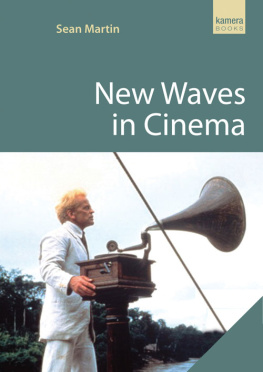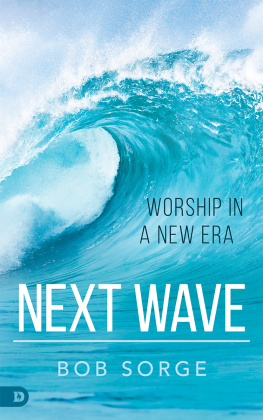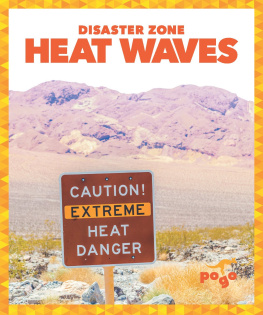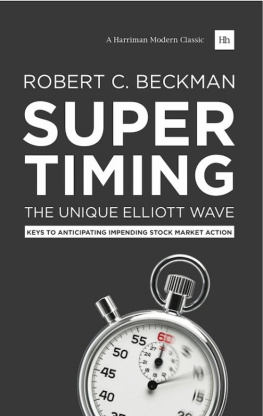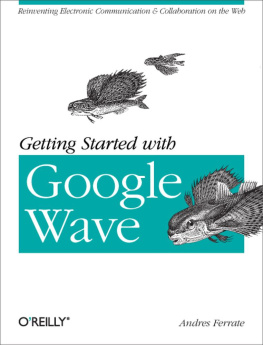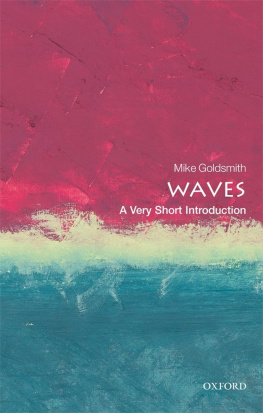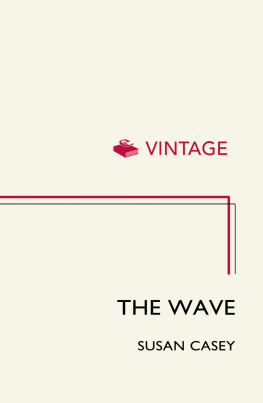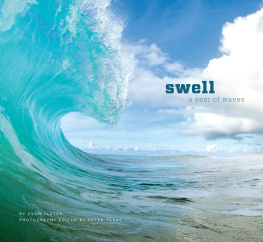Ian Copsey - Harmonic Elliott Wave: The Case for Modification of R. N. Elliotts Impulsive Wave Structure
Here you can read online Ian Copsey - Harmonic Elliott Wave: The Case for Modification of R. N. Elliotts Impulsive Wave Structure full text of the book (entire story) in english for free. Download pdf and epub, get meaning, cover and reviews about this ebook. year: 2011, publisher: Wiley, genre: Science fiction. Description of the work, (preface) as well as reviews are available. Best literature library LitArk.com created for fans of good reading and offers a wide selection of genres:
Romance novel
Science fiction
Adventure
Detective
Science
History
Home and family
Prose
Art
Politics
Computer
Non-fiction
Religion
Business
Children
Humor
Choose a favorite category and find really read worthwhile books. Enjoy immersion in the world of imagination, feel the emotions of the characters or learn something new for yourself, make an fascinating discovery.
- Book:Harmonic Elliott Wave: The Case for Modification of R. N. Elliotts Impulsive Wave Structure
- Author:
- Publisher:Wiley
- Genre:
- Year:2011
- Rating:5 / 5
- Favourites:Add to favourites
- Your mark:
Harmonic Elliott Wave: The Case for Modification of R. N. Elliotts Impulsive Wave Structure: summary, description and annotation
We offer to read an annotation, description, summary or preface (depends on what the author of the book "Harmonic Elliott Wave: The Case for Modification of R. N. Elliotts Impulsive Wave Structure" wrote himself). If you haven't found the necessary information about the book — write in the comments, we will try to find it.
In Harmonic Elliott Wave he reveals the methodology, the common ratios that link different parts of the wave structure and provides a wealth of practical examples to explain his findings. Through this methodology he shows how waves develop and dispels the misconceptions that have been common practice by Elliotticians over the years. He supports his methods by consistently ensuring that waves are related by common ratios to help the reader apply the techniques with greater understanding and accuracy.
Q&A with Ian Copsey, Author of Harmonic Elliot Wave
| Author Ian Copsey |
It became very clear to me several years ago that the impulsive structure Elliott outlined, together with the commonly quoted ratios for forecasting wave endings just didnt work. I look at professional Elliotticians and amateurs alike and the number of different wave counts for one price chart is astounding. However, they are always retrospective and I havent really found anyone consistently forecasting accurate stalling areas for each wave.
What are the changes you have made?
Very simply R.N. Elliott considered that impulsive waves are constructed of 5 waves, and on frequent occasions extend which means the waves seem to develop in the same size as others in the same wave degree. Furthermore, if you look at Elliotts structure each directional wave is made up of 5 waves. The Harmonic structure also displays this same characteristic. However, where Elliott calls these Waves (1), 1 etc I label them Wave (a) and Wave (c) which are both 5-wave moves. However, by observing which waves were related and ignored the structure it was clear that the relationships, are between the 3-wave structures. If you really think of it, the changes really reflect the Dow Theory so its not an amazing change. One major difference is that in the Harmonic structure impulsive are constant. There are no such things as extended waves or failed fifths which, in my opinion are merely repercussions of the incorrect structure.
How can you be sure that the changes you have made are correct?
Very easily actually! They have enabled me to increase my accuracy by a huge margin, on many occasions to the very point.
What is it that generates the accuracy?
The requirement that wave ratios are present and targets are confirmed across all wave degrees. Without the use of ratios there is clearly no way to forecast wave completions. I think its important to understand here that Elliott developed his theory in the 1920s. At that time he obviously had to calculate all wave relationships long hand. I had the luxury of a spreadsheet which vastly reduces the time to check relationships and enables a more thorough analysis.
What other benefits are there from the Harmonic wave structure?
Apart from consistency, the requirement for consistent wave relationships at each stage of development reduces the subjectivity of Elliott Wave. It also puts a halt to the common wave labeling without any real understanding of whether waves are related. Analysts and traders simply use key highs and lows to decide where they place wave labels. It just doesnt work that way. In traditional Elliott Wave almost no attention is made to how deep a correction can be, or what are the common projections. The Harmonic structure has a wonderful consistency and most of the time can identify alternation between Wave (ii) and Wave (iv).
How do other Elliotticians react?
There are two common reactions. The first, and most prevalent, is extreme interest because the Elliottician has found the same frustration as I. The other reaction is complete denial.
Do you get everything right then?
No, its not the Holy Grail. However, it does give me a much stronger understanding of when Im right and when Im wrong, often the precise point at which Im wrong. While subjectivity is reduced by requiring matching targets across the wave degrees there are always ambiguities and difficulties in identifying some waves in whippy markets.
Ian Copsey: author's other books
Who wrote Harmonic Elliott Wave: The Case for Modification of R. N. Elliotts Impulsive Wave Structure? Find out the surname, the name of the author of the book and a list of all author's works by series.


